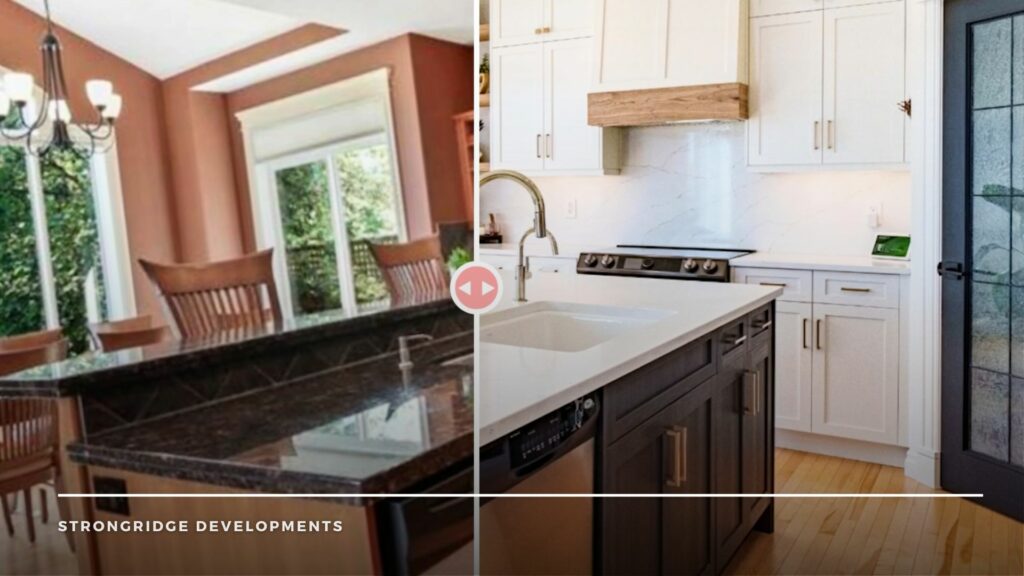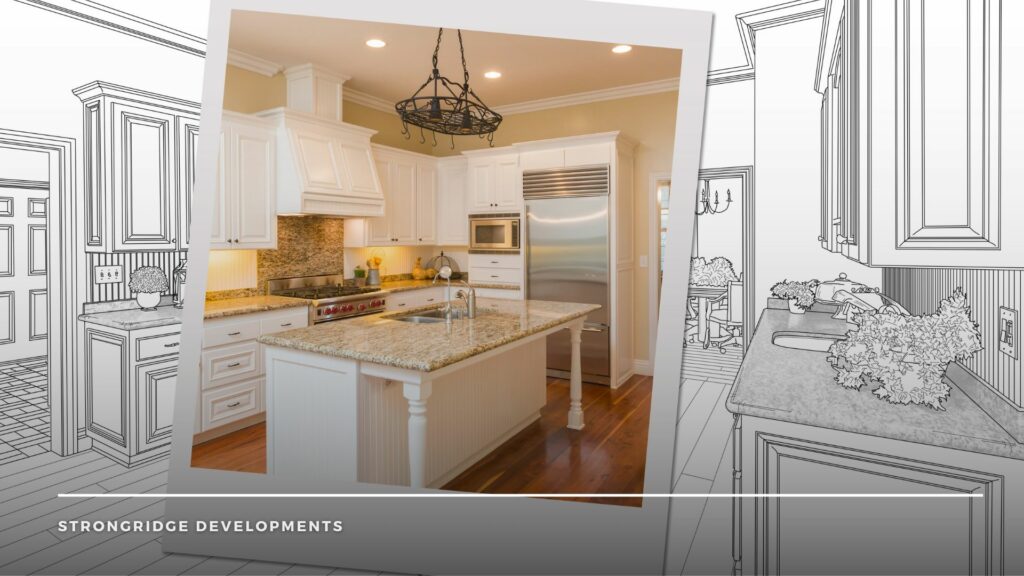In this comprehensive guide, we will walk you through the critical steps to consider before you start swinging the sledgehammer. From assessing your needs and setting a budget to choosing the right professionals and planning for the temporary loss of your kitchen, we have you covered. Let’s dive in and set the foundation for a successful and smooth kitchen renovation.
Assess Your Needs and Wants
One of the most important aspects of a kitchen remodel is to have a clear understanding of what you need from the new kitchen, as well as what you desire. This is a personal analysis that should take into account your lifestyle, your culinary habits, and the everyday functionality of the space.
Start by considering how many people use the kitchen regularly, what kind of meals you enjoy preparing, and how social your kitchen activities are. Do you need a larger space for family gatherings? Are you a gourmet chef in need of professional-grade appliances? Or perhaps, you’re looking for a low-maintenance layout that makes daily chores easier.

Evaluate Your Current Kitchen
Examine your current kitchen setup with a critical eye. Take note of what works well and which areas are a source of frustration. Maybe there’s not enough counter space for meal preparation or insufficient lighting that makes cooking tasks harder than they need to be. Do your appliances consume too much energy or fail to meet your needs?
By identifying the specific elements that require improvement, you will be better equipped to allocate your budget effectively. Consider the flow of traffic in your kitchen, the adequacy of electrical outlets, and the convenience of the storage solutions currently in place. This in-depth analysis will become the roadmap for the design of your new kitchen.

Consider Your Budget
Determining your financial limits before proceeding with a kitchen remodel is not just advisable, it’s imperative. While it’s tempting to dream big, it’s vital to balance your desires with a realistic budget that reflects your financial comfort zone.
Start by understanding the full scope of kitchen remodeling costs, which can include demolition, construction, materials, labor, appliances, and often, unforeseen expenses. It’s wise to add a contingency fund of at least 10-15% to your budget for unexpected costs. Remember, investing in quality where it counts, such as durable countertops and energy-efficient appliances, can save you money in the long run.

Research Trends and Styles
Staying informed about the latest kitchen design trends can provide valuable inspiration for your remodel. However, it’s equally important to differentiate between fleeting fads and enduring styles that align with your personal taste and the architectural character of your home.
By exploring a variety of resources such as design magazines, home improvement shows, and online platforms like Houzz or Instagram, you can gather a wealth of ideas. Keep an eye out for smart storage solutions, innovative materials, and design aesthetics that resonate with you. Compile your findings in a visual format, such as a mood board, to aid in communicating your vision to the professionals you’ll be working with.

Hire Professionals
To ensure the success of your kitchen remodel, it is advisable to enlist the expertise of seasoned professionals. While undertaking certain aspects of the renovation as DIY projects might seem cost-effective, experienced designers and contractors offer the knowledge, skills, and resources to execute your vision efficiently and to a high standard.
Find a Reliable General Contractor
When searching for a contractor, it is crucial to conduct thorough research. Solicit recommendations from friends, family, or neighbors who have recently undergone a remodel. Examine online portfolios and customer reviews to gauge the quality of their work and client satisfaction.
After narrowing down your list, arrange face-to-face meetings to discuss your project in detail. These consultations will not only provide you with estimates but also give you a sense of the contractor’s communication style and professionalism. Remember to verify their licensing, insurance, and any certifications that affirm their expertise in kitchen remodeling.
Work with a Kitchen Designer
A professional kitchen designer brings a wealth of knowledge in space planning, ergonomics, and design principles that can transform your kitchen into a functional work of art. They can introduce you to the latest innovations in kitchen design and assist in selecting materials and finishes that complement your lifestyle and aesthetic preferences.
When selecting a designer, it’s important to find someone who is not only creative but also attentive to your needs and budget constraints. Review their portfolio and ask for testimonials from past clients to ensure their work aligns with your expectations. A collaborative relationship with your designer is key to achieving a kitchen that is both beautiful and practical.

Plan for Functionality
The functionality of your kitchen is paramount. It should be a space that not only looks good but also allows you to perform kitchen tasks with ease and enjoyment. The design should cater to your cooking style, storage needs, and overall kitchen use.
Consider Layout and Workflow
An optimal kitchen layout is the cornerstone of functionality, promoting an efficient workflow and minimizing unnecessary movement. The classic work triangle concept, which focuses on the positioning of the sink, stove, and refrigerator, is a fundamental design principle to consider.
Additionally, think about the placement of appliances, the size and orientation of the island, and the accessibility of storage. A well-planned layout should facilitate a natural flow of activities, from food preparation to serving and cleaning up. A kitchen designer can offer valuable insights into the best configuration for your space, taking into account your unique habits and requirements.
Upgrade Lighting Fixtures
Proper lighting is a critical element in kitchen design, impacting both functionality and ambiance. A well-lit kitchen can prevent accidents, reduce eye strain, and enhance the overall cooking experience. Implementing a layered lighting approach that includes task, ambient, and accent lighting can create a versatile and inviting space.
Task lighting should be strategically placed to illuminate work surfaces, such as under-cabinet lights above countertops. Ambient lighting, such as ceiling fixtures or chandeliers, provides general illumination and can set a warm, welcoming tone. Accent lighting can be used to showcase architectural features or decorative elements, adding depth and interest to the kitchen design.

Make Kitchen Cabinet Upgrades
Custom cabinets are a fundamental component of any kitchen design, serving both functional and aesthetic purposes. If your existing cabinets are poorly configured, lack adequate storage, or are stylistically outdated, upgrading them can dramatically improve your kitchen’s utility and appearance.
Consider integrating custom features that cater to your specific storage needs, such as pull-out pantries, corner drawers, or appliance garages. These personalized solutions can make a significant impact on the efficiency of your kitchen, ensuring that every item has a designated place, reducing clutter, and streamlining your daily routine.

Choose Timeless Finishes
When selecting finishes for your cabinets, it’s wise to opt for timeless styles that will endure as trends come and go. Classic choices, such as neutral tones or natural wood finishes, can serve as a versatile backdrop for any future updates or changes in decor.
If you’re drawn to bold colors or unique materials, consider incorporating them into smaller, easily changeable elements of your kitchen. For example, a vibrant backsplash, colorful bar stools, or distinctive cabinet hardware can inject personality into your space without committing to permanent, costly features that may quickly become dated.
Create a Temporary Kitchen
A kitchen remodel can disrupt your daily routine, rendering your primary cooking space unusable for an extended period. Planning ahead by establishing a temporary kitchen can minimize inconvenience and maintain some normalcy during the renovation.
Identify an area in your home that can accommodate essential appliances, such as a microwave, hot plate, or toaster oven. Ensure you have access to a water source, and if possible, set aside a small refrigerator or cooler for perishables. By creating a makeshift kitchen, you can continue to prepare simple meals and maintain a semblance of your usual culinary activities.
Final Thoughts

Embarking on a kitchen remodel is no small feat, but with careful planning and the support of skilled professionals, it can be an incredibly rewarding endeavor. By thoroughly assessing your needs, setting a clear budget, and focusing on functionality, you can craft the kitchen of your dreams.
Throughout the process, remember to make decisions that align with your long-term goals and choose finishes that will withstand the test of time. With these strategies in mind, you’re well on your way to a successful kitchen transformation. Happy remodeling!







